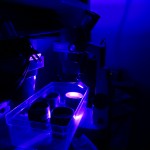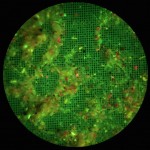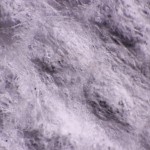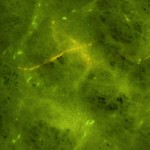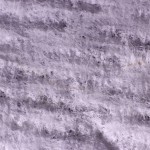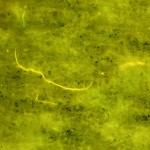Microplastics and Fluorescence
Microplastics, plastics fibers or particles on the order of millimeters or less in size, have become ubiquitous in the world around us, and especially in the marine environment. Some of the microplastics are primary, purposely manufactured to be small to perform specific functions such as in facial cleansers and cosmetics, while others are secondary, produced by deterioration of larger pieces. A Google search on ‘microplastics in the environment’ will point you to many good references.
A number of groups are now using the NIGHTSEA Stereo Microscope Fluorescence Adapter as a tool in their work with microplastics. We learned about this application from a team at the College of Charleston that used the system. Dr. Phil Dustan and his students have been examining a wide variety of subjects, both marine and terrestrial. Many of the particles of interest fluoresce and show up clearly in samples. They even found microplastic particles in a sample of eagle poop!
- NIGHTSEA SFA in the Dustan lab
- Eagle poop fluorescence
This video shows how the group is collecting samples and examining them for microplastics.
Besides entering the food web, microplastics can be incorporated into manufactured products. We looked at a paper towel and toilet paper under our microscope here at NIGHTSEA and were surprised by the number of glowing spots and fibers.
- Paper towel, white light
- Paper towel, fluorescence
- Toilet paper, white light
- Toilet paper, fluorescence
The Dustan lab started out using the Royal Blue excitation/emission set, and that is also what is shown for the paper towel and toilet paper samples. They later added the Ultraviolet set to expand their detection capabilities. Many synthetic fibers have a strong blue fluorescence under ultraviolet excitation. See our article on fibers collected by a washing machine discharge filter. Our recommendation now based on our experience to date is that for particles (non-fiber), the first choice would be Royal Blue, with Ultraviolet as the backup. For microfibers this is reversed – Ultraviolet should find more with Royal Blue as a powerful backup.
Useful links:
- Microplastics
- Google search – microplastics in the environment
- Fluorescence of fibers and other material collected by a washing machine discharge filter
- Dryer lint fluorescence, separating white and dark loads
- An investigation of extraneous fibers found on towels and wash cloths
- Model SFA Stereo Microscope Fluorescence Adapter

